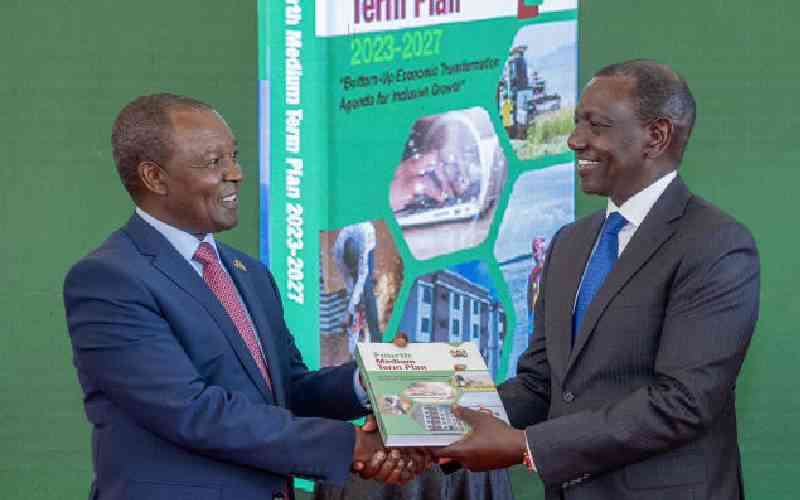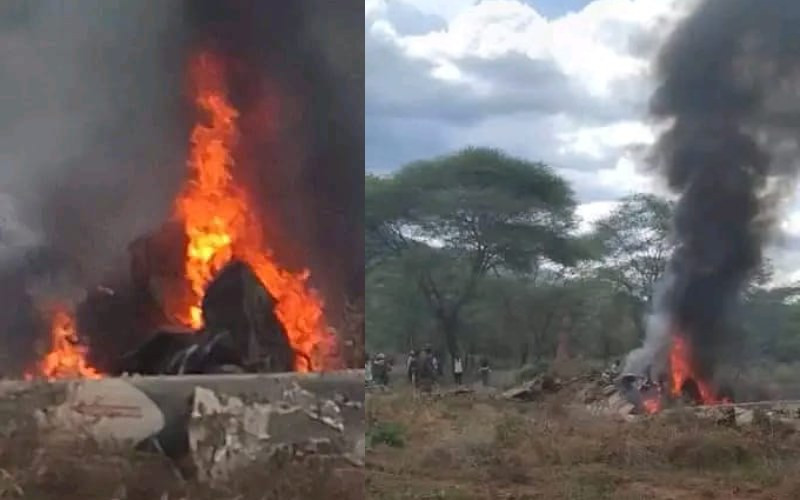Vision 2030 seeks to turn Kenya into a middle-income country. What will happen after we attain this goal? This is an important question. You see, there is something called the middle-income trap. It is when economies are trapped in a state of low-wage production for export, but lacking in the high skills needed for continued innovation and enhancement of productivity.
Economists have noted that it is especially difficult to break free of the middle-income trap due to the tendency of middle-income economies to over-rely on successful sectors, or to keep chasing the next big success without adequately cementing their dominance in a given sector.
This is the risk we face, having hinged our development agenda on merely becoming a middle-income country. This, in and of itself, is a laudable goal. But at the same time our policy makers should be worried that the very systems we have designed to get us to middle-income status will become millstones that prevent us from growing further.
This is not to say that Vision 2030 is misguided. It is by far the boldest economic plan, and if we focus on implementing even just half of the proposed projects, Kenya will forever be better for it. That said, we need to start thinking clearly about how we can tweak the agenda of Vision 2030 to accelerate the process of economic transformation while at the same time guard against the middle-income trap.
Can we do this? Unfortunately, the evidence suggests that our priorities are elsewhere. First, as is becoming clearer by the day, we are slowly veering away from the Vision 2030 agenda. The focus seems to have shifted to pet projects of the politically connected.
This will prove costly in the long run. Right now everyone sees Kenya as the place to be. We shall soon be a producer of oil. We can access cheap loans. But as they say, it is only when the sea resides that we get to know who was skinny-dipping. Where will we be when the music stops? Illustrative examples of what we should work against are Ghana and Zambia, hitherto growth superstars who acquired middle-income status only to be buffeted by macro-economic instability due to poor planning.
The lesson from Ghana and Zambia is that we should lock in the current positive climate by planning well, and increasing the efficiency of public sector investments in development projects. Are we investing in sectors that will merely boost domestic consumption and export of raw materials? What is our plan to boost domestic manufacturing and productivity in the agricultural sector?
Again, currently the signs are not promising. Instead of planning for transformation, we are still playing the old games of politicised development economics. Instead of prioritising the productive ministries – like energy, manufacturing and industry, and agriculture – the most powerful ministry in our system (besides the security ministries) is devolution, a political shop.
As long as our focus is more on politics and administration, rather than transformative change, we will forever run around in circles. It is time we freed up the president’s bandwidth from the political and administrative functions, and had him apply himself to his development agenda. That is where Kenya needs him the most.
Which brings me back to my ultimate question, what happens after we acquire middle-income status? By the look of things, we may be able to achieve this goal well ahead of 2030. In the first quarter of this year, the economy grew by 4.9 per cent. That despite the drop in the tourism sector and massive security challenges.
Unless we run into serious fiscal challenges, the government’s infrastructure investments and the services sector will continue to propel the economy forward. Indeed according to the latest World Bank rankings, Kenya is now classified as a lower middle-income economy, up from the previous low-income economy status.
Of course in reality these rankings do not mean much in terms of the number of sufurias in Wanjiku’s kitchen. However, they may matter for the Treasury’s ability to access concessionary loans from international lenders.
The basic point is that the more we grow, the harder it will become to continue growing fast. This calls for a clear-headed plan on how to continue growing after we have plucked all of the low hanging fruit.
This next stage will require a smarter workforce, a more nimble team of policymakers, and more inclusive growth. This means retooling our education system; abandoning the bad habit of jua kali policy making; and spreading the economic boom to the rural and urban poor. Middle-income status is not Canaan. We should aim higher.
Stay informed. Subscribe to our newsletter
 The Standard Group Plc is a
multi-media organization with investments in media platforms spanning newspaper
print operations, television, radio broadcasting, digital and online services. The
Standard Group is recognized as a leading multi-media house in Kenya with a key
influence in matters of national and international interest.
The Standard Group Plc is a
multi-media organization with investments in media platforms spanning newspaper
print operations, television, radio broadcasting, digital and online services. The
Standard Group is recognized as a leading multi-media house in Kenya with a key
influence in matters of national and international interest.
 The Standard Group Plc is a
multi-media organization with investments in media platforms spanning newspaper
print operations, television, radio broadcasting, digital and online services. The
Standard Group is recognized as a leading multi-media house in Kenya with a key
influence in matters of national and international interest.
The Standard Group Plc is a
multi-media organization with investments in media platforms spanning newspaper
print operations, television, radio broadcasting, digital and online services. The
Standard Group is recognized as a leading multi-media house in Kenya with a key
influence in matters of national and international interest.









